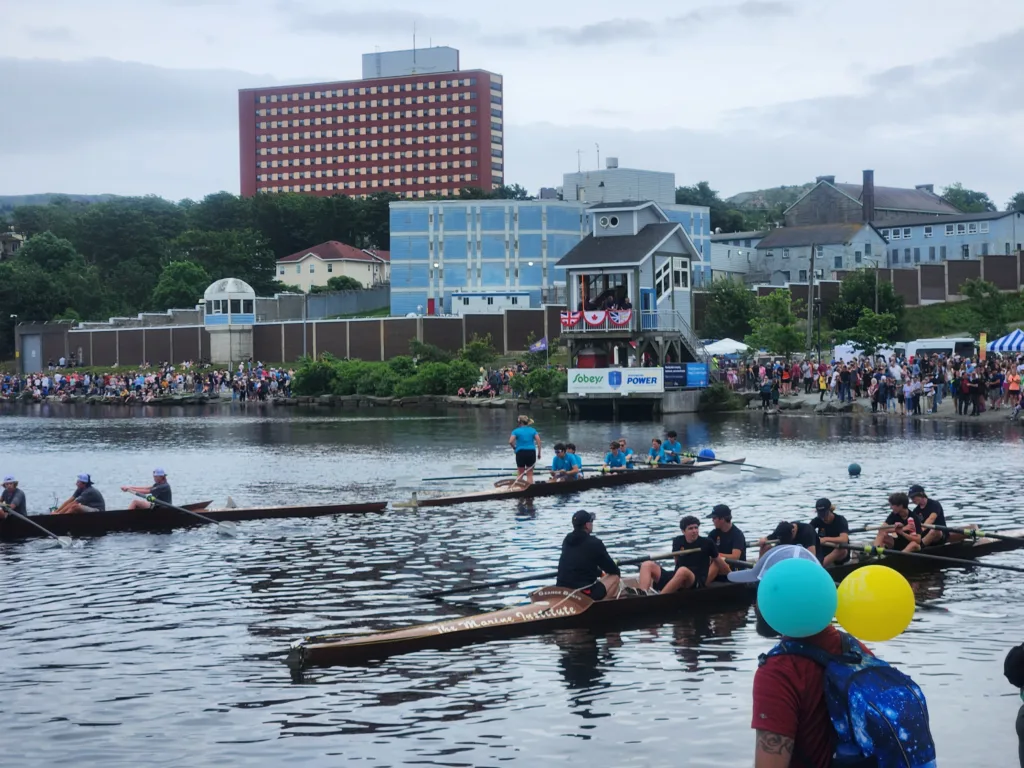Exploring The Unique and Beautiful Culture of Newfoundland
We are exploring The Unique and Beautiful Culture of Newfoundland and Labrador. Nestled in the easternmost reaches of Canada, Newfoundland boasts a cultural tapestry as vibrant and diverse as its breathtaking landscapes. This journey takes us through the heart of Newfoundland and Labrador unique traditions, folk music, and festivals, unveiling the rich cultural heritage that sets this province apart.
What makes Newfoundland and Labrador Unique and Beautiful
One of the defining features of this province is its inspiring natural beauty. From the towering cliffs along the coastline to the pristine wilderness of its interior, Newfoundland and Labrador offer a visual feast for those who appreciate the wonders of the great outdoors. Gros Morne National Park, a Heritage site, is a prime example of the province’s natural splendour. The park boasts diverse landscapes, including fjords, mountains, and coastal cliffs, creating a haven for outdoor enthusiasts and nature lovers.
Where to Stay
One of the key elements to planning a successful trip to St. John’s is choosing the right place to stay. Hotels: For visitors looking for a comfortable and convenient stay in St. John’s, hotels are a popular choice. The city has a wide range of hotel options to suit different budgets and preferences.

The rugged coastline, battered by the Atlantic Ocean, adds an untamed allure to the province. Rocky shores give way to sandy beaches, while quaint fishing villages dot the landscape, offering a glimpse into the province Atlantic heritage. The picturesque town of Trinity, with its colourful clapboard houses and historic architecture, is a testament to the enduring spirit of Newfoundland and Labrador coastal communities. Beyond its natural wonders, its rich cultural tapestry truly sets Newfoundland and Labrador apart. The province is home to a unique blend of traditions shaped by the indigenous peoples, early European settlers, and subsequent waves of immigration. The result is a cultural mosaic that is as diverse as it is fascinating. The people of Newfoundland and Labrador are renowned for their warmth and hospitality. The friendliness of the locals, often expressed through the traditional “Newfoundland Welcome,” creates an inviting atmosphere for visitors. The province cultural festivals, such as the lively St. John’s Regatta and the spirited George Street Festival, showcase the vibrant music, dance, and culinary traditions deeply ingrained in the local identity.
Rental Cars: For visitors looking for rental cars for their trip to Newfoundland and Labrador. We have many car rental options to suit different budgets and preferences.
Language plays a role in shaping the cultural landscape of Newfoundland and Labrador. With its unique vocabulary and pronunciation, the distinct Newfoundland English reflects the province historical ties to Ireland and England. Phrases like “Newfie” and “bye” are not just linguistic quirks; they are expressions of a cultural identity that the people proudly embrace. The province’s history is another layer of its uniqueness. As one of the oldest European settlements in North America, Newfoundland and Labrador bear the weight of centuries of human activity. The remnants of ancient indigenous cultures, the traces of Viking exploration, and the legacy of European colonization are all woven into the fabric of the land. The iconic Signal Hill in St. John’s stands as a symbol of the province’s historical significance. The first transatlantic wireless-signal was received at Signal Hill, marking a pivotal moment in communication history. The historic site offers panoramic views of the city and the Atlantic Ocean, inviting visitors to contemplate the interconnectedness of Newfoundland and Labrador past and present.
Traditions: Hospitality as a Way of Life

Newfoundlanders are renowned for their warm hospitality, making visitors feel like long-lost friends. Explore the cherished tradition of inviting strangers into one’s home for tea and a chat. This simple act reflects the genuine and friendly nature deeply ingrained in Newfoundland culture.
Mummering:
Delve into the playful and spirited tradition of mumming, where locals disguise themselves in eccentric costumes, visit neighbours’ homes, and engage in lively song and dance. This age-old practice is often observed during Christmas and embodies Newfoundland and Labrador joyous and communal spirit. Mumming, a practice with roots in the Old World, has taken on a distinctive Newfoundland and Labrador flavour, weaving together elements of history, folklore, and community spirit.
The Mummers Festival usually takes place from November 25 to December 9 annually. This is a 2-week series of activities and workshops leading up to the main parade. Official site: Home | Mummers Festival As early settlers moved to Newfoundland and Labrador, they brought their traditions to Newfoundland and Labrador. Mumming took root in the local culture. The practice involves groups of people, often masked or disguised, going door to door, engaging in song, dance, and comedic performances. The goal is to entertain and create a sense of camaraderie and shared joy within the community.
Evolution of Mumming in Newfoundland and Labrador:
Over time, mumming in Newfoundland and Labrador has evolved into a distinctive and localized expression of cultural identity. The tradition usually peaks during late November to Early December, when communities come together to celebrate and strengthen social bonds. In the rural landscapes of the province, mummers elaborate costumes, often made from household items and old clothing, adding a touch of improvisation and creativity to the festivities. Mummers usually wear masks or paint their faces, shrouding themselves in mystery and playfulness. The costumes and disguises entertain and provide a sense of anonymity, allowing individuals to step outside their everyday roles and embrace the freedom of expression that mumming brings.
Performance Community Building and Social Bonding:
Lively music, traditional songs, and humorous skits characterize the mummers’ performances. The elements of improvisation and spontaneity are central to mumming, as performers engage in witty banter and interactive play with their audience. Each mummer group brings its unique style and energy to the festivities. A familiar game during mumming involves the hosts attempting to guess the identities of the disguised performers. This guessing game adds an element of intrigue and amusement, fostering a sense of community participation. Sometimes, mummers may reveal their true identities after their performance, leading to laughter and a deeper connection among community members. At its core, mumming in Newfoundland and Labrador is a robust community-building activity and social bonding event. The shared experience of laughter, music, and performance creates lasting memories and strengthens the ties that bind neighbours and friends. Mumming transcends generational divides, with families passing down the tradition from generation to generation, ensuring its continuity and relevance in contemporary times.
Folk Music The Soulful Strains of Traditional Tunes

Newfoundland and Labrador folk music reflects its Atlantic history, capturing the essence of life on the rugged Atlantic coast. Explore the sounds of accordions, fiddles, and bodhrans as they bring to life tales of fishing, love, and the ever-present connection to the sea. One of the most captivating aspects of Newfoundland and Labrador cultural heritage is its folk music, which serves as a melodic storyteller of the region’s history, struggles, joys, and triumphs. The roots of Newfoundland and Labrador folk music can be traced back to the early settlers who arrived on the island’s shores. They brought a rich musical tradition that fused with the melodies of the indigenous people, creating a unique musical landscape. Over the centuries, the music evolved, incorporating influences from Irish, Scottish, English, and French traditions while maintaining its distinct Newfoundland and Labrador flavour.
One of the defining characteristics of Newfoundland and Labrador folk music is its narrative quality. The songs are not just musical compositions but serve as vessels for storytelling, passing down the history and heritage of the region from one generation to the next. Themes range from Atlantic adventures and the hardships of life in a harsh environment to celebrations of community and the enduring spirit of the people. The lyrics often reflect the Newfoundland and Labrador people’s daily lives, struggles, and triumphs, creating a musical chronicle of their cultural identity. The musical instruments used in Newfoundland and Labrador folk music also contribute to its distinctive sound. Traditional instruments like the accordion, fiddle, tin whistle, and bodhran are commonly featured, giving the music an authentic and rootsy feel. These instruments provide the backdrop for the storytelling and evoke a sense of nostalgia, connecting listeners to traditions.
As Newfoundland and Labrador folk music developed, it became integral to community gatherings and celebrations. Whether at a kitchen party, a festival, or a local pub, the music brings people together, fostering a sense of unity and camaraderie. The infectious rhythms and heartfelt lyrics create an atmosphere where everyone is invited to join in, singing or dancing to the tunes of the fiddle and accordion. In this way, folk music becomes a living, breathing expression of the community’s spirit, providing a soundtrack to the shared experiences of its people. The role of Newfoundland and Labrador folk music goes beyond entertainment. It serves as a cultural ambassador, sharing the stories and traditions of the province with the rest of the world. In an era of globalization, where cultural identities can sometimes be overshadowed, music has become a powerful tool for preserving and celebrating the unique heritage of Newfoundland and Labrador. Whether performed on local stages or showcased at international festivals, the folk music of this region continues to resonate with many audiences far and wide.
Kitchen Parties:
Dive into the heart of Newfoundland and Labrador music scene with the phenomenon of kitchen parties. These intimate gatherings in homes or local pubs feature impromptu performances where everyone is encouraged to join in the music and revelry. It’s a musical tradition that fosters community and celebrates the joy of live performance. This tradition, deeply rooted in the history and lifestyle of the region, has become a symbol of warmth, camaraderie, and the vibrant musical heritage of Newfoundland and Labrador. At the heart of every Kitchen Party is a gathering of friends, family, and neighbours in the cozy confines of a kitchen or living room. It’s an informal affair where the barriers between performer and audience blur, creating an intimate and inclusive atmosphere. The setting is often humble, but the experience is rich with the essence of Newfoundland and Labrador cultural identity.
One must discuss a Newfoundland and Labrador Kitchen Party by highlighting music’s pivotal role in shaping the event. Music is not just a form of entertainment. It’s a shared language that brings people together, fostering a sense of belonging and unity. Traditional folk tunes and ballads echo through the air, carried by the soulful voices and skillful hands of those present. The lively sounds of fiddles, accordions, guitars, and bodhráns create a tapestry of melodies that tell stories of the region’s Atlantic history, resilience, and the everyday lives of its people. The tradition of Kitchen Parties traces its roots back to the close-knit communities of Newfoundland and Labrador, where a sense of community and weather conditions necessitated finding solace and joy within the confines of one’s home. The kitchen, often the warmest and most inviting space in a house, became the natural setting for these gatherings. Families and friends huddled during a Kitchen Party, creating an oasis of warmth, laughter, and music.
Its informal and spontaneous nature sets the Newfoundland and Labrador Kitchen Party apart. There’s no rigid structure or predetermined playlist. The music evolves organically, with different participants leading songs or suggesting tunes. This impromptu style keeps the atmosphere fresh and dynamic and allows for the inclusion of everyone present, regardless of musical expertise. The sense of community fostered by Kitchen Parties goes beyond the immediate gathering. It reflects the broader communal spirit ingrained in the culture of Newfoundland and Labrador. In a country increasingly characterized by digital connectivity and fast-paced living, these gatherings serve as a reminder of the importance of face-to-face interaction, of sharing stories and experiences in the company of others.
Moreover, the Newfoundland and Labrador Kitchen Party has gained recognition beyond the province’s borders, becoming a cultural export showcasing the region’s unique charm. Visitors to the area often find themselves welcomed into these intimate gatherings, experiencing firsthand the warmth and hospitality that define Newfoundland and Labrador.
More Ways to Explore Newfoundland and Labrador
- Coming To Newfoundland, U.S., U.K., and Europe Visitors Know This Now.
- Beautiful Islands Around Newfoundland and Labrador to Visit
- Exploring The Beautiful City of St John’s
- 6 bucket list trips things everyone should do in their lifetime
- Excited For The Ultimate Newfoundland And Labrador Road Trip
- Exploring These 8 Beautiful Unseen Places In Newfoundland
- Enjoy The Beautiful Hidden Gems In Newfoundland Avalon Region
- The 3 Most Beautiful Places In Bonavista Peninsula We Visited
Festivals and Events
Regatta Day Extravaganza: Experience the excitement of the Royal St. John’s Regatta, one of North America’s oldest continuous sporting events. This annual rowing regatta is a day of festivities, attracting locals and visitors alike for races, live entertainment, and a lively atmosphere perfectly encapsulating Newfoundland and Labrador spirit. Official site: Royal St. John’s Regatta. The Royal St. John’s Regatta, often referred to as “The Regatta,” stands as a testament to the rich cultural heritage and the resilient spirit of the people in this corner of Canada. With its roots tracing back century, this annual event has become more than just a boat race. It is a celebration of community, history, and the enduring bonds that tie the people of St. John’s together.

At its core, the Royal St. John’s Regatta is a rowing competition where teams from various neighbourhoods and communities showcase their prowess on the water. The serene Quidi Vidi Lake transforms into a battleground of oars and determination as rowers compete for victory. The sight of sleek, wooden rowing shells slicing through the water, propelled by the synchronized efforts of the rowers, is a spectacle that captivates both participants and spectators alike. However, the regatta is not merely a showcase of athletic prowess but a holistic experience that encapsulates the essence of Newfoundland and Labrador cultural identity. The shores of Quidi Vidi Lake come alive with vibrant colours, echoing the cheers and laughter of families and friends who gather to partake in this annual event. It is a day of camaraderie and festivity, where the community unites to celebrate its collective history and shared identity. The Royal St. John’s Regatta is more than just a sports event. It is a time for the people to come together, share stories, and revel in the unique spirit that defines Newfoundland and Labrador. The regatta grounds become a melting pot of traditions, with food stalls offering local delicacies, artisans showcasing their crafts, and musicians filling the air with the lively tunes of the region. The atmosphere is electric, creating an unforgettable experience for participants and onlookers. The Royal St. John’s Regatta stands as a beacon of grassroots sportsmanship. It is a reminder that the true essence of sport lies in the pursuit of victory, the bonds forged, and the memories created along the way. The regatta fosters a sense of community pride, with neighbourhoods rallying behind their respective teams, creating a friendly rivalry that adds an extra layer of excitement to the event.

From a historical perspective, the Royal St. John’s Regatta has weathered the storms of time, evolving and adapting to the changing landscape of Newfoundland and Labrador. It has withstood the test of wars, economic fluctuations, and societal transformations, emerging each year as a symbol of resilience and continuity.
The regatta serves as a living history book, narrating the tales of generations past and present, interwoven with the changing dynamics of the province. For those fortunate enough to witness the Royal St. John’s Regatta, whether as active participants or enthusiastic spectators, the event leaves an indelible mark on their hearts. It transcends the boundaries of a mere sporting competition, becoming a cherished tradition that binds the community together. The regatta embodies the spirit of Newfoundland and Labrador – a spirit marked by a deep connection to the land, a rich cultural heritage, and an unwavering sense of community.
George Street Festival:
Uncover the lively atmosphere of the George Street Festival in St. John’s, where the usually quaint and colourful street transforms into a haven of live music, vibrant costumes, and an all-encompassing celebration of Newfoundland culture. It’s a week-long extravaganza that showcases the province diverse musical talent. Official site: George Street – The Biggest Little Street in North America. Newfoundland and Labrador has a rich cultural tapestry and deep-rooted traditions and hosts many festivals that celebrate the unique spirit of the province. Among these, the George Street Festival is a vibrant and dynamic celebration that captures the essence of Newfoundland lively music scene and warm hospitality.

The George Street Festival occurs in the heart of Downtown St. John’s, the capital city of Newfoundland and Labrador. George Street, known for its concentration of pubs and bars, transforms into a lively hub of activity during this annual event. The festival typically spans several days, offering diverse musical performances, cultural events, and a sense of community emblematic of Newfoundland welcoming spirit. One of the defining features of the George Street Festival is its commitment to showcasing local talent. Newfoundland and Labrador have a rich musical heritage deeply intertwined with the province’s history and culture. During the festival, the stages on George Street come alive with performances by local musicians and bands, providing a platform for emerging artists to share their craft with a broader audience. The festival’s lineup often includes a mix of musical genres, reflecting the diverse influences shaping Newfoundland musical landscape. From traditional folk tunes that harken back to the province’s Atlantic past to contemporary sounds that reflect the modern Newfoundland experience, the George Street Festival offers a musical journey that resonates with locals and visitors.

What sets the George Street Festival apart is its inclusive atmosphere. The festival draws people from all walks of life, bringing together locals and tourists in a shared celebration of music and culture. Newfoundlander friendly and open-hearted nature shines through during the festival, creating an environment where everyone feels like they belong. The pubs and bars along George Street are crucial to the festival’s success. Pubs and bars become stages for impromptu jam sessions, creating an intimate and authentic experience for festival-goers. The proximity of these pubs and bars allows attendees to seamlessly move from one performance to another, ensuring they can explore the diverse musical offerings throughout the night.
Heritage Sites and Museums: Explore the carefully preserved heritage sites and museums scattered across Newfoundland, offering a glimpse into its storied past. Places like The Rooms in St. John’s provide a comprehensive look at the province’s history, art, and culture, making them essential stops for any cultural enthusiast.
Culinary Traditions: All exploration of culture is complete with a taste of local cuisine. Dive into Newfoundland and Labrador culinary traditions, from Jigg’s dinner, a deliciously hearty and traditional Sunday meal, to the renowned fish and brewis. Restaurants and eateries across the province embrace these culinary delights, making them essential experiences for foodies.
Connecting with Locals: Bring a personal touch to your trip to Newfoundland and Labrador by interviewing or talking with a local. Their firsthand experiences and stories authenticate your experience and provide valuable insights into Newfoundland and Labrador daily lives and cultural nuances.
As we conclude our journey through Newfoundland’s unique culture, it becomes evident that this province is not just a destination. It’s an experience that immerses visitors in a world of rich traditions, soul-stirring folk music, and lively festivals. The genuine warmth of its people and the enduring connection to its Atlantic roots make Newfoundland a cultural treasure waiting to be explored. So, come, join the dance, savour the tunes, and become a part of the living story that is Newfoundland and Labrador unique cultural heritage.
Travelling to Newfoundland and Labrador. Travelers also ask.

What are the top tourist attractions in Bay Bulls and Witless Bay?
Bay Bulls is known for its incredible whale-watching tours, particularly with O’Brien’s Whale and Bird Tours. Witless Bay Ecological Reserve is famous for its puffin colonies and seabird watching. Both areas also offer beautiful coastal hiking trails, such as the East Coast Trail.
Where can I go whale watching in Bay Bulls?
O’Brien’s Whale and Bird Tours is the most popular whale-watching operator in Bay Bulls. Their tours often spot humpback whales, orcas, and other marine life, providing an unforgettable experience.
What wildlife can I see in Witless Bay Ecological Reserve?
The Ecological Reserve in Witless Bay is home to the largest Atlantic puffin colony, common murres, black-legged kittiwakes, and other seabirds on the island. During certain seasons, visitors can also see humpback whales and dolphins.
How do I get to Bay Bulls and Witless Bay from St. John’s?
Bay Bulls and Witless Bay are approximately a 30-minute south of St. John’s. Take the Southern Shore Highway, directly to these coastal towns.
What are the best hiking trails in Bay Bulls?
The Spout Path and Mickeleens Path are part of the East Coast Trail network and are highly recommended for their scenic coastal views, challenging terrain, and natural beauty.
When is the best time to visit Witless Bay to watch puffins?
The best time to see puffins in Witless Bay is mid-May to mid-September. During this period, thousands of puffins nest and raise their young on the Witless Bay Ecological Reserve islands.
Are there any good restaurants in Bay Bulls and Witless Bay?
In Mobile, The Captain’s Table is well-known for its seafood dishes and delicious local cuisine in a cozy atmosphere.
What accommodation options are available in Bay Bulls and Witless Bay?
The area has several charming B&Bs and inns, such as Bread and Cheese Country Inn in Bay Bulls and Whale House Guest House in Witless Bay, offering comfortable stays and local hospitality.
What are some family-friendly activities in Bay Bulls?
Whale watching, visiting the Witless Bay Ecological Reserve, and exploring the scenic trails are great family-friendly activities. Additionally, families can enjoy picnicking, puffin watching and beachcombing along the coast.
Can you swim in the waters around Bay Bulls and Witless Bay?
The waters around Bay Bulls and Witless Bay are generally cold, even in summer, and the rugged coastline can be dangerous for swimming. However, beachcombing and exploring tide pools can be enjoyable activities.
What marine life can be seen on a boat tour from Bay Bulls?
Boat tours from Bay Bulls often encounter humpback whales, orcas, minke whales, and numerous seabirds such as puffins, razorbills, and murres. Occasionally, dolphins and sea turtles are also spotted.
Are there any guided tours in Witless Bay?
Several companies offer guided tours in Witless Bay, focusing on bird watching, whale watching, and exploring the ecological reserve. O’Brien’s Whale and Bird Tours is a notable provider.
What are the best photography spots in Bay Bulls and Witless Bay?
The rugged coastline, picturesque harbour, and wildlife offer excellent photography opportunities. Specific spots include:
- The viewpoints along the East Coast Trail.
- The harbour in Bay Bulls.
- The bird colonies in Witless Bay Ecological Reserve.
What are some nearby attractions to Bay Bulls and Witless Bay?
Nearby attractions include Cape Spear, North America’s easternmost point, and La Manche Provincial Park, known for its suspension bridge and hiking trails. St. John’s has a rich history and vibrant culture.
Is there a visitor center in Bay Bulls or Witless Bay?
While there isn’t a dedicated visitor center, local tour operators and accommodations often provide information and resources for visitors.
What are the best times of year to visit Bay Bulls and Witless Bay for outdoor activities? The summer months (June to September) are ideal for outdoor activities, offering the best weather for hiking, whale watching, and bird watching. Fall also provides beautiful foliage and fewer crowds.
Can you see the Northern Lights in Bay Bulls and Witless Bay?
While it’s not common, on precise nights, particularly in the winter months, it is possible to see the Northern Lights in Bay Bulls and Witless Bay due to their northern latitude and low light pollution.
What types of whales can you see in Bay Bulls and Witless Bay?
In Bay Bulls and Witless Bay, you can commonly see humpback whales, minke whales, and occasionally orcas. The region’s rich marine ecosystem attracts these magnificent creatures, particularly during the summer when they migrate to feed.
When is the best time to watch whales in Bay Bulls and Witless Bay?
The best time for whale watching in Bay Bulls and Witless Bay is from mid-June to mid-August. During these months, the waters teem with whales due to the abundance of capelin, their primary food source.
What is the weather like for whale watching in Bay Bulls and Witless Bay?
The weather during the whale watching season in Bay Bulls and Witless Bay is mild, with temperatures ranging 13°C to 22°C. However, it can be windy and more relaxed on the water, so dressing in layers is advisable.
How long do whale-watching tours last in Bay Bulls and Witless Bay?
Whale-watching tours in Bay Bulls and Witless Bay typically last 2 to 2.5 hours. This duration allows ample time to locate and observe the whales and enjoy the stunning coastal scenery.
Can you see puffins while whale watching in Bay Bulls and Witless Bay?
Absolutely! Puffins are a common sight in Bay Bulls and Witless Bay, especially around the Witless Bay Ecological Reserve, which hosts one of the largest puffin colonies in North America. Many whale-watching tours also include puffin viewing.
What should you wear for whale watching in Bay Bulls and Witless Bay?
For whale watching in Bay Bulls and Witless Bay, wearing layered clothing to adjust to changing temperatures, a waterproof jacket, non-slip shoes, and a hat is best.
Are whale-watching tours in Bay Bulls and Witless Bay family-friendly?
Yes, whale-watching tours in Bay Bulls and Witless Bay are family-friendly. The tours suit children, and the experience can be educational and thrilling for all ages. However, checking with the tour operator for specific age restrictions or recommendations is essential.
How close can you get to whales on a Bay Bulls and Witless Bay tour?
Tour boats maintain a respectful distance from the whales to ensure their safety and comfort. Typically, boats stay at least 200 meters away, but whales often approach boats out of curiosity, offering closer views without disturbance.
What other wildlife can you see while whale watching in Bay Bulls and Witless Bay?
Besides whales and puffins, you might see other seabirds, such as razorbills, murres, and gannets. Seals and dolphins are also frequent visitors to these waters, enhancing the overall wildlife viewing experience.
Do you need to book whale-watching tours in advance in Bay Bulls and Witless Bay?
We recommend booking whale-watching tours in advance, especially during peak season (mid-June to mid-August). This ensures you secure a spot on your preferred tour and time.
What are Bay Bulls and Witless Bay’s best whale-watching tour operators?
Some of the best whale-watching tour operators in Bay Bulls and Witless Bay include O’Brien’s Whale and Bird Tours, Gatherall’s Puffin and Whale Watch, and Mullowney’s Puffin and Whale Tours. These operators are well-reviewed for their knowledgeable guides and excellent service.
How much do whale watching tours cost in Bay Bulls and Witless Bay?
Whale-watching tour prices in Bay Bulls and Witless Bay range from CAD 60 to CAD 120 per adult. Discounts are often available for children, seniors, and group bookings.
Are whale-watching tours in Bay Bulls and Witless Bay accessible for people with disabilities?
Many whale-watching tour operators strive to be inclusive, offering boats with ramps or lifts for wheelchair access. However, contacting the tour operator in advance is advisable to ensure they can accommodate specific accessibility needs.
What safety measures exist for whale-watching tours in Bay Bulls and Witless Bay?
Safety measures include life jackets for all passengers, safety briefings before departure, experienced captains and crew, and adherence to weather advisories. Boats are also equipped with communication devices and emergency equipment.
Can you see whales from the shore in Bay Bulls and Witless Bay?
While spotting whales from the shore in Bay Bulls and Witless Bay is possible, the best views are typically obtained from a boat. However, certain coastal areas and lookout points may offer occasional sightings.
What should you bring on a whale-watching tour in Bay Bulls and Witless Bay?
Bring a camera or binoculars for better viewing, layered clothing, a waterproof jacket, sunscreen, a hat, and any personal items like motion sickness medication.
What is the Witless Bay Ecological Reserve, and why is it essential for whale watching?
The Witless Bay Ecological Reserve is a protected area known for its abundant marine wildlife, including large seabird colonies and frequent whale sightings. Its nutrient-rich waters attract whales, making it a prime location for whale watching.
Are there educational components to whale-watching tours in Bay Bulls and Witless Bay?
Many tours include educational commentary from knowledgeable guides who provide information about whale behaviour, marine ecosystems, and conservation efforts. This enhances the overall experience by adding an educational dimension.
What is the success rate of seeing whales on tours in Bay Bulls and Witless Bay?
The success rate of seeing whales in Bay Bulls and Witless Bay is very high, often exceeding 90% during peak season. The region’s rich feeding grounds and migration patterns ensure frequent sightings.
Is St. John’s, Newfoundland, worth visiting?
St. John’s, the capital, is worth visiting. St. John’s offers a rich cultural heritage, a vibrant arts scene, and breathtaking natural landscapes. Known for its colourful row houses, historic sites like Signal Hill, and picturesque harbour, St. John’s provides a unique blend of natural beauty. The city’s friendly locals, lively music scene, and excellent seafood add to its charm, making it a must-visit destination.
What is St. John’s, Newfoundland, famous for?
St. John’s is famous for several things:
- Signal Hill: This historic site offers panoramic views, and the Cabot Tower is where the first transatlantic wireless communication was received.
- George Street is renowned for its nightlife, with the most bars and pubs per capita in North America.
- Colourful Row Houses: Known as Jellybean Row, these brightly painted homes are iconic.
- Rich History: As one of the oldest cities in North America, it has a rich maritime history and cultural heritage.
How many days does it take to visit St. John’s, Newfoundland?
To fully experience St. John’s and its surroundings, a visit of 4 to 5 days is recommended. This allows time to explore the city’s historical sites, enjoy the local cuisine, enjoy the nightlife on George Street, and venture out to nearby natural attractions such as Cape Spear and Quidi Vidi Village.
Is St. John’s, Newfoundland, a walkable city?
Yes, St. John’s is a walkable city, especially in the downtown area, where many attractions, restaurants, and shops are concentrated. The city’s hilly terrain can be challenging, but it also offers beautiful vistas and charming streets to explore on foot.
What is the best month to visit Newfoundland?
The best months to visit Newfoundland are from late June to early September. The weather is milder during this period, and you can enjoy outdoor activities like hiking, whale watching, and iceberg spotting. July and August are viral for tourists.
What is the best time of year to visit St. John’s, Newfoundland?
The best time to visit St. John’s is during the summer, from June to early September, during this this time the weather is warm and many festivals and events occur. This is also the peak season for whale-watching and iceberg viewing.
Is St. John’s Newfoundland expensive?
St. John’s can be moderately expensive, especially during peak tourist season. Accommodation, dining, and activities can add up, but budget-friendly options are also available. Compared to larger Canadian cities, St. John’s is relatively affordable.
Is Newfoundland expensive to visit?
Newfoundland is not excessively expensive to visit, but costs can vary depending on the time of year and type of accommodation. While certain activities and dining experiences may be costly, there are plenty of free or low-cost activities to enjoy.
What is the famous street in St. John’s, Newfoundland?
George Street is famous in St. John’s for its vibrant nightlife and numerous bars and pubs. George Street is a popular spot for locals and tourists looking to experience live music and socialize.
Can you get around St. John’s without a car?
Yes, you can get around St. John’s without a car, especially downtown, where many attractions are within walking distance. You’ll have access to convenient transportation options, such as public transportation, taxis, and ride-sharing services.
How long is the ferry ride from Nova Scotia to St. John’s, Newfoundland?
There is no direct ferry to St. John’s. However, you can take a ferry from North Sydney, Nova Scotia, to either Argentia (a 16-hour ride) or Port aux Basques (a 6–8-hour ride) in Newfoundland. From there, you must drive to St. John’s, which takes approximately 1.5 hours from Argentia or 9 hours from Port aux Basques.
How long does it take to drive around St. John’s?
Driving around St. John’s can take about an hour, depending on traffic and stops. Exploring the greater St. John’s area, including nearby attractions like Cape Spear and Quidi Vidi, can take several hours.
What is the crime rate in St. John’s, Newfoundland?
St. John’s has a relatively low crime rate compared to other Canadian cities. While it experiences typical urban crime, it is generally considered a safe place for residents and visitors.
How cheap is Newfoundland?
Newfoundland is relatively affordable compared to other parts of Canada. While some areas, especially St. John’s, can be expensive, smaller towns and rural areas, however, offer more budget-friendly options for accommodation and dining.
What is the best way to tour Newfoundland?
The best way to tour Newfoundland is by car. This allows you to explore the island’s diverse landscapes, remote villages, and natural attractions at your own pace. Renting a car is recommended if you’re flying into the province.
In what month do you see icebergs in Newfoundland?
Iceberg season in Newfoundland typically runs from late May to early June, though icebergs can sometimes be seen as late as July. The best month for iceberg viewing is usually June.
What is the best month to see icebergs in Newfoundland?
June is generally the best month to see icebergs in Newfoundland. This is when most icebergs drift along the coast, providing spectacular viewing opportunities.
When can I see puffins in Newfoundland?
Puffins can be seen in Newfoundland from late May to early September. The best months to see them are June and July when they are most active during their breeding season.
What is the wettest month in Newfoundland?
October is typically the wettest month in Newfoundland, and it experiences the highest average rainfall.
When can you see whales in St John’s, Newfoundland?
Whale-watching season in St. John’s is from mid-June to mid-August. During this time, humpback, minke, and other whale species migrate through the waters of Newfoundland.
What should I pack for St. John’s, Newfoundland?
When visiting St. John’s, pack layers to accommodate varying weather conditions. Essentials include:
- Waterproof jacket and footwear
- Warm clothing (sweaters, hats, gloves)
- Comfortable walking shoes
- Sunscreen and sunglasses
- Cameras and binoculars for wildlife and iceberg viewing
Can you see the Northern Lights from Newfoundland?
You can watch the Northern Lights (Aurora Borealis) from Newfoundland, particularly in low-light pollution areas. The best time to see them is from late fall to early spring.
Where is the best place to see whales and icebergs in Newfoundland?
Twillingate and Bonavista are Newfoundland best places to see whales and icebergs. These coastal areas offer excellent viewing opportunities and tours.
Are there polar bears in Newfoundland?
Polar bears are occasionally seen in the northern parts of Newfoundland and Labrador, particularly in the Labrador region. They are not commonly found in Newfoundland itself.
How long does it take to drive from one end of Newfoundland to the other?
Driving from the western end of Newfoundland (Port aux Basques) to the eastern end (St. John’s) takes approximately 9–10 hours without significant stops.
Is Fogo Island worth visiting?
Fogo Island is worth visiting for its unique culture, stunning landscapes, and renowned Fogo Island Inn. It offers a distinctive experience of Newfoundland’s heritage and natural beauty.
How often can you see northern lights in Newfoundland?
The Northern Lights can be seen in Newfoundland several times a year, particularly during periods of high solar activity. The best times are during winter when nights are longer and darker.
What is the best time to see the Northern Lights?
The best time to see the Northern Lights is during the winter, from late September to early April, particularly around midnight or early morning.
How long is the ferry ride to Fogo?
The ferry ride to Fogo Island from Farewell, Newfoundland, takes approximately 45 minutes to an hour.
How much is the ferry to Fogo Island?
As of the latest information, the ferry to Fogo Island costs around $15–20 CAD per vehicle and additional fees for passengers, but prices can vary, so it’s best to check current rates.
What is so special about Fogo Island?
Fogo Island is unique for its rugged natural beauty, traditional outport culture, and the acclaimed Fogo Island Inn. It’s known for its artistic community, distinctive architecture, and stunning coastal Scenery.
Are there narwhals in Newfoundland?
Narwhals are typically found in Arctic waters and are uncommon in Newfoundland.
Are there dolphins in Newfoundland?
Yes, dolphins can be seen in the waters around Newfoundland, including species like the Atlantic white-sided dolphin and the common dolphin.
Are there killer whales in Newfoundland?
Killer whales (orcas) are occasionally sighted around Newfoundland, especially during summer.
What is Cape Spear known for?
Cape Spear is known for being the easternmost point in North America. It features a historic lighthouse and offers stunning 180-degree views of the Atlantic Ocean, making it a popular tourist spot.
Where can I see whales in Newfoundland?
Some of the best places to see whales in Newfoundland include:
- St. John’s and Cape Spear
- Trinity and Bonavista
- Twillingate
- Witless Bay Ecological Reserve
How do you see puffins in St John’s?
To see puffins near St. John’s, visit the Witless Bay Ecological Reserve island, which is home to large colonies of puffins. Boat tours from Bay Bulls can take you close to the puffin nesting sites.
How long do you need to see Newfoundland?
Plan to spend at least 7–19 days to see Newfoundland highlights. This allows enough time to explore St. John’s, the Avalon Peninsula, Gros Morne National Park, and other key attractions.
When should I go to Newfoundland?
The best time to visit Newfoundland is from late June to early September when the weather is mild. You can enjoy outdoor activities, events, and festivals. This period is also ideal for whale-watching and iceberg-viewing.
Can you see icebergs in Newfoundland now?
Icebergs are typically seen off the coast of Newfoundland from late spring to early summer. The best months for iceberg viewing are usually May and June. If it’s within this timeframe, you can likely see icebergs, especially in areas like Twillingate and St. Anthony.
When to see icebergs in Twillingate?
The prime time to see icebergs in Twillingate is from late May to early June. This period offers the highest likelihood of witnessing these massive ice formations as they drift southward along the coast.
Where is the best place to see icebergs?
The best places to see icebergs in Newfoundland include Twillingate, St. Anthony, Bonavista, and Fogo Island. Twillingate is often called the “Iceberg Capital of the World” due to its high iceberg count and accessibility.
What is the best month to see icebergs in Newfoundland?
The best month to see icebergs in Newfoundland is May. During this month, the icebergs are plentiful, and the weather is often more favourable for boat tours and coastal viewing.
How long do icebergs last in Newfoundland?
Icebergs can last from a few weeks to several months in Newfoundland waters. Their longevity depends on their size, the water temperature, and the weather conditions. Typically, icebergs seen off Newfoundland begin their journey from Greenland and take about 1-2 years to reach the island.
Where is Newfoundland Iceberg Alley?
Iceberg Alley refers to the stretch of ocean off the coast of Newfoundland and Labrador, where icebergs are commonly seen. It extends from the coast of Labrador down through Newfoundland’s eastern shore, including areas like Twillingate, St. Anthony, and Bonavista.
Are there icebergs in Newfoundland in August?
By August, the number of icebergs in Newfoundland significantly decreases. While it’s possible to see the occasional iceberg, they are much rarer than the peak months of May and June.
What month is the warmest in Newfoundland?
July is typically the warmest month in Newfoundland, with a temperatures ranging from 15°C to 20°C. This makes it a popular time for visitors seeking to explore the island’s natural beauty.
Where to see whales in Newfoundland?
Whale watching is popular in Newfoundland from June to September. The best locations include St. John’s, Trinity, Bonavista, and Witless Bay Ecological Reserve, renowned for its abundant marine life, including humpback whales.
Can you see the Northern Lights from Newfoundland?
You can see the Northern Lights from Newfoundland, particularly in the more northern and remote parts of the island. The best times are during the fall and winter when the nights are the longest and the skies are the darkest.
How close to Newfoundland did the Titanic sink?
The Titanic sank about 370 miles south-southeast off the coast of Newfoundland. The nearest land to the wreck site is the southeastern tip of Newfoundland.
How close is the Titanic to Newfoundland?
The Titanic’s wreck is located approximately 370 miles off the coast of Newfoundland. This proximity made Newfoundland a critical point in the communication and rescue efforts following the disaster.
Where did the Titanic sink off Newfoundland?
The Titanic sank in the Atlantic Ocean, approximately 370 miles south-southeast of Newfoundland coast.
Are there polar bears in Newfoundland?
Polar bears are not native to Newfoundland itself, but they occasionally appear on the northern coast of Labrador, particularly when sea ice drifts south from the Arctic.
What is the iceberg capital of Canada?
Twillingate, a small coastal town in Newfoundland, is known as the “Iceberg Capital of the World” due to its frequent and spectacular iceberg sightings during the peak season.
How fast do icebergs move?
Icebergs generally drift at about 0.7 kilometres per hour (0.4 miles per hour). However, their speed can vary depending on ocean currents, winds, and the iceberg’s size.
Why are icebergs sometimes black?
Icebergs appear black when they contain a high amount of sediment and debris. This can occur when icebergs calve off glaciers that scrape the land, picking up rocks and soil, which then get frozen into the ice.
Does the Atlantic Ocean in Newfoundland freeze?
The Atlantic Ocean around Newfoundland does not freeze over due to its relatively warmer temperatures than Arctic waters. However, sea ice and icebergs from the Arctic can drift into Newfoundland waters, especially during the spring.
Are there puffins in Twillingate?
While puffins are not commonly found in Twillingate, they are prevalent in other parts of Newfoundland, such as the Witless Bay Ecological Reserve. Twillingate is more famous for its iceberg and whale sightings.
What is the best time to see whales in NL Newfoundland?
The best time to see whales in Newfoundland is from June to September. Humpback whales, minke whales, and other species migrate through Newfoundland coastal waters during this period.
Is the tip of the iceberg visible?
Yes, the tip of the iceberg is visible above the water, but it represents only about 10% of its total mass. The remaining 90% is submerged underwater, making icebergs particularly dangerous for ships.
Can you see icebergs in Newfoundland in July?
Yes, you can still see icebergs in July in Newfoundland, although they are less common than in May and June. By July, many icebergs have drifted further south or melted.
Where is the best place to see icebergs?
Twillingate, St. Anthony, Bonavista, and Fogo Island are the best places to see icebergs in Newfoundland. These locations offer optimal viewing points and tour opportunities.
How often can you see northern lights in Newfoundland?
The Northern Lights can be seen in Newfoundland several times a year, especially in the fall and winter months. The frequency depends on solar activity and the clarity of the night skies.
Why is it called Iceberg Alley?
The stretch of water known as Iceberg Alley gets its name from the numerous icebergs that travel through this area each year. The icebergs originate from Greenland and drift down the Labrador Current past Newfoundland and Labrador.
When should I visit Iceberg Alley?
The best time to visit Iceberg Alley is from late May to early June. During this period, the highest concentration of icebergs can be seen, offering the most spectacular views.
Can you swim in Newfoundland in August?
Yes, you can swim in Newfoundland in August, especially in the warmer, sheltered areas like lakes and coves. However, the ocean waters remain pretty cold, typically around 12-15°C, so swimming in the sea can be chilly.
How hot is Newfoundland in July?
Newfoundland experiences its warmest weather in July, with a temperatures ranging from 15°C to 20°C. Some days can be warmer, especially inland and away from the coastal breezes.
These are the best travel planning resources you should use.
Looking to book your trip to Newfoundland and Labrador? Use these resources that are tried and tested by other travellers like you who vacation in Newfoundland and Labrador. Bookmark these links. Save them for future reference.
Booking Flights, Hotels or B&B: Start planning your next vacation trip by finding the best flight, hotel or b&b deals. Book Here
Finding things to do in Newfoundland and Labrador on TripAdvisor and Viator is not hard. Enjoy boat tours, whale watching, icebergs watching, kayaking and other activities.
You can also find low prices on hotels, B&B and cabins with these two providers. If you are located in Canada, the USA, the UK or Europe, use Booking.com, and if you are in Canada, the USA or anywhere else, use TripAdvisor.
Car Rental: Here is what we recommend:
When you book with Rentalcars.com, you can compare prices and find the best vehicle for your trip. Economybookings.com Display all their vehicle on the website with a detailed description. They display high-quality photos and a user rating as well. Qeeq.com serves road trip travellers like you from different countries by working with car rental companies worldwide.
Get compensated if your flight is delayed or cancel
AirHelp and Compensateair will help you with flight delays, cancellations, or denied boarding. All you need to do is to submit your flight details, and they will handle the claim process on your behalf. They will handle all the paperwork, airline negotiations, and legal proceedings.
Do you need more help planning your trip?
Check out our Resources Page, where we highlight all the resources and companies you can use to assist with your planning.
Where can I find more information about travelling to Newfoundland and Labrador? Here are helpful resources for planning your trip:
Newfoundland and Labrador Tourism | Travel Canada | The Rooms Provincial Museum

